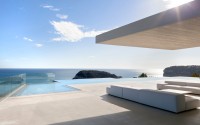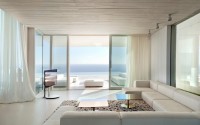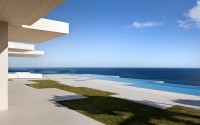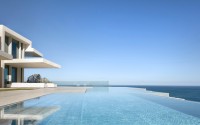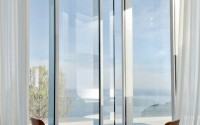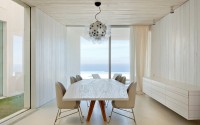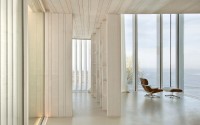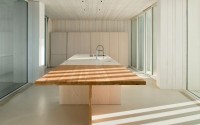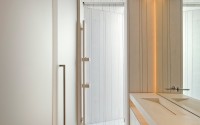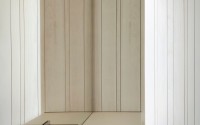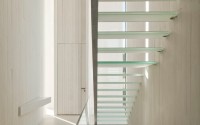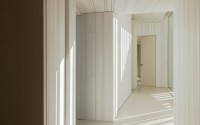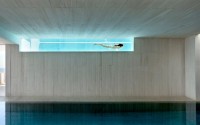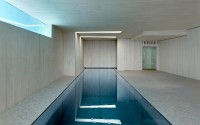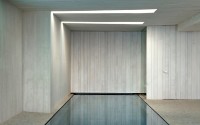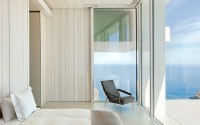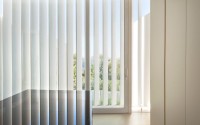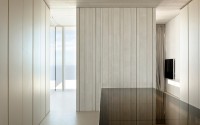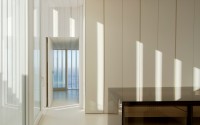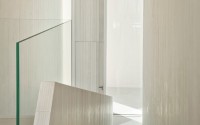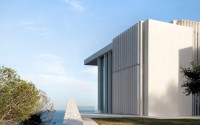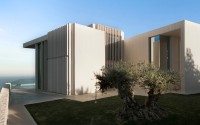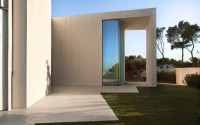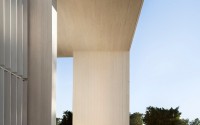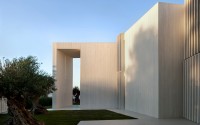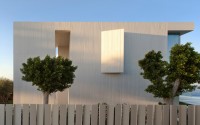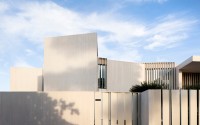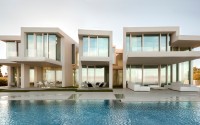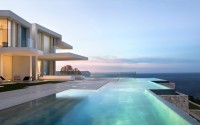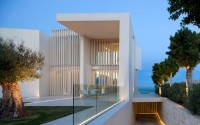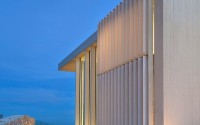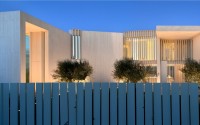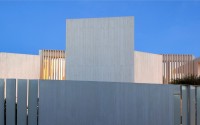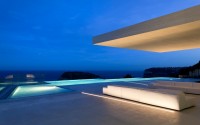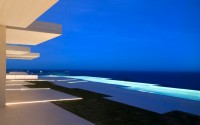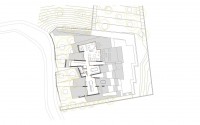Sardinera House by Ramon Esteve Estudio
This luxurious seaside residence was designed in 2014 by Ramon Esteve Estudio. It’s located between El Portixol and Cala Blanca in Spain.

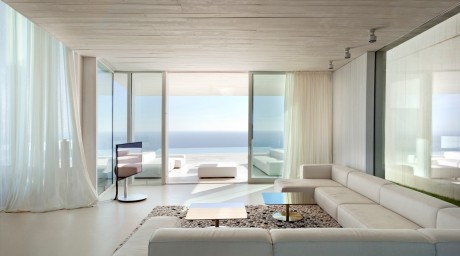

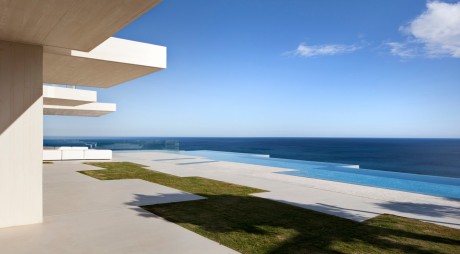


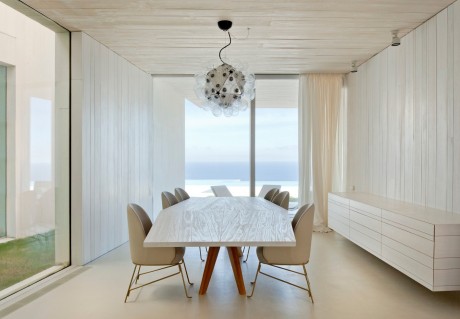
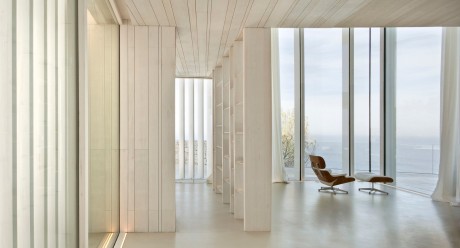
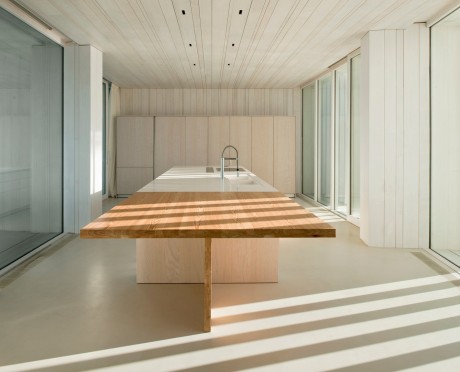
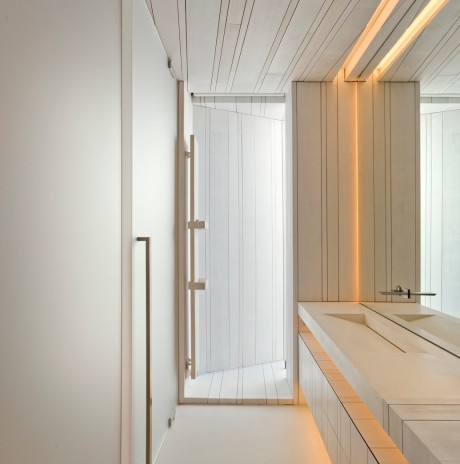
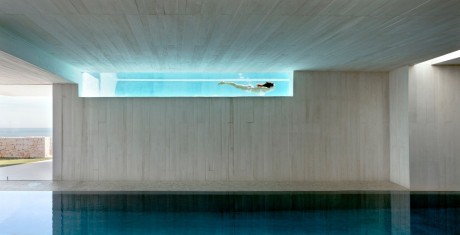

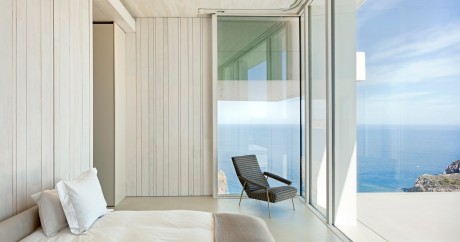
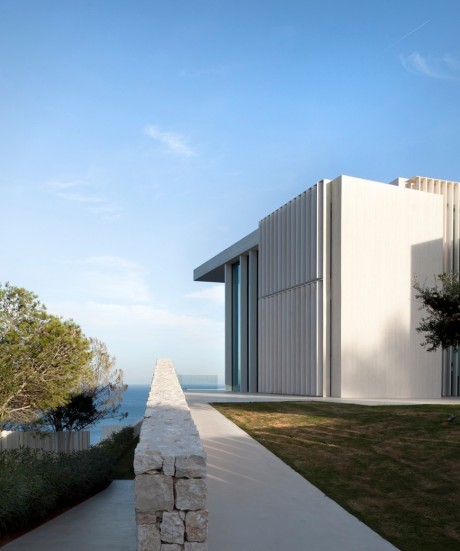
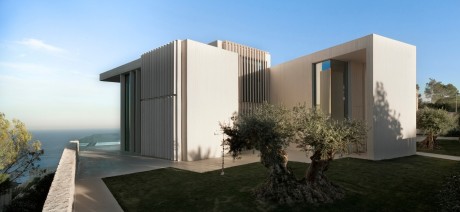
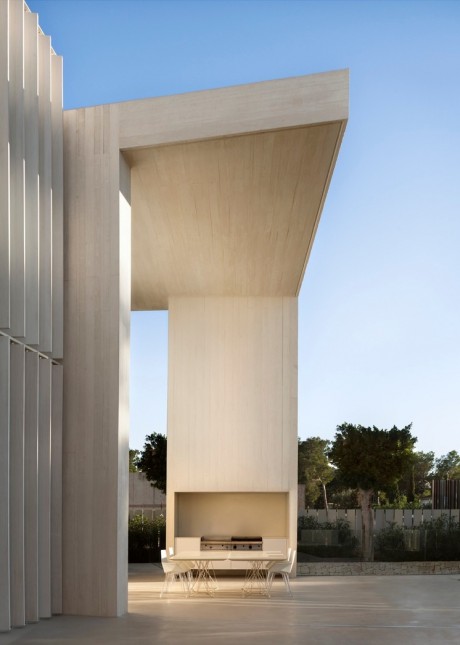
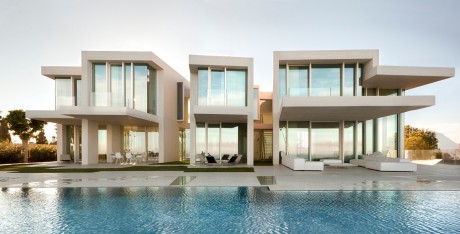
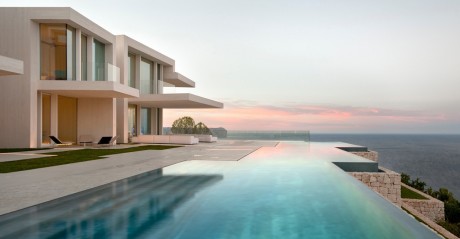
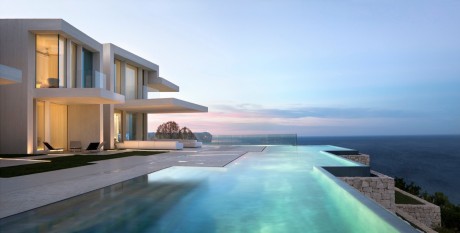
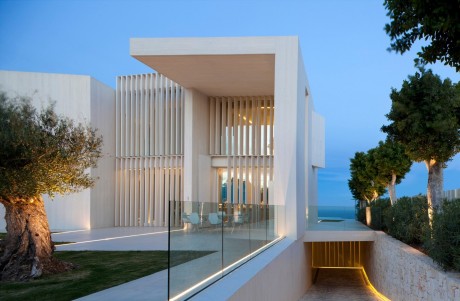
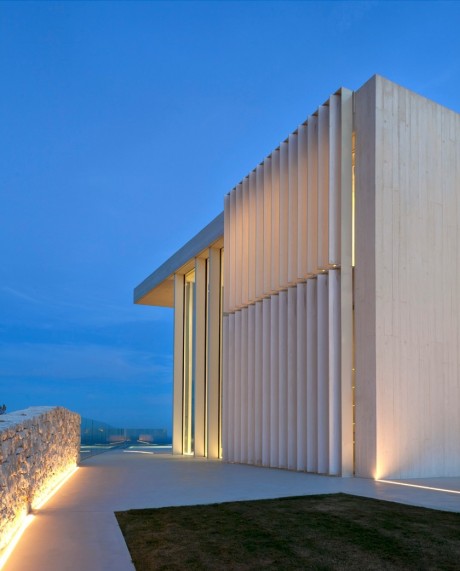
Description by Ramon Esteve Estudio
Located in a setting of great beauty and valuable landscape, in front of the Mediterranean Sea, between El Portixol and Cala Blanca, the Sardinera House lays on the top of a hillside, flanked by a headland entering the sea on a bay of turquoise waters.
Unique location
“The original idea for the design was based on enjoying and enhancing the panoramic views of the setting, by creating a relaxing contemplative environment that allows enjoying the experience provided by the place.”
Massive & light
A set of concrete walls is thrown facing different directions, compressing and expanding the views and generating several images. The vertical surfaces are limited horizontally by long cantilevers that extend towards the sea, thus creating verandas that enclose the large terrace. Because of their constructive system, these cantilever don’t lean on the walls, but fit in between them, thus increasing the visual tension and generating paradoxical sensations of massiveness and weightlessness.
“The views outwards are framed between the architectural surfaces and the pool surface, outlined on the horizon.”
One house, two faces
The longitudinal façades of the house are the opposite. The entrance façade, hermetical and opaque, is protected by an automatic system of adjustable blinds made of whitened Accoya wood. It protects the façade from the sun exposition and, at the same time, limits the viewing from the street. On the contrary, the East façade is much more permeable and transparent. The concrete vertical surfaces are closed by large glass panes, protected by cantilevers and sinuous curtains that bring an ethereal Mediterranean character.
Tectonic nature
Sardinera house has a strong tectonic character because of its expressive materials. The texture of the white concrete poured in timber formwork and the texture of the whitened timber have achieved such a similarity that they sometimes seem the same, as it happens in the lateral windows.
All to white
The texture produced by the print of the timber formwork is noticeable on the concrete surface, thus establishing a common language with the white-shaded timber used in blinds, ceilings, party walls and furniture. A white hue covers all the element, which are different just because of its material, generating subtle changes of texture. The local stone masonry walls build a base for the white concrete volumes to stand on and also link the building to the landscape.
Visible process
The house reflects the construction process. All the structural parts are made of exposed concrete, while the enclosure is made of timber and glass.
Open sea
There is an access through a double-height volume with side walls aiming the view at the sea and offering the visitor a first contact with the horizon. The day rooms are on the ground floor, as part of a fluid set articulated by the white concrete walls. Some vegetation is introduced in the in-between spaces, moving the garden into the house. Each room opens towards the horizon through its own veranda.
Framing the views
The living room has a main role and a singular feature, a glass corner framing the best views of the sea.
To open the corners
Each volume on the first floor hosts a bedroom. Instead of allowing frontal views framed by the walls, the glass corners offer much more interesting panoramic views. Each room has a small glass balcony, similar to a bay window, set back of the boundary of the cantilever, so to enhance the visual importance of the horizontal surfaces.
Functional sculpture
The staircase has been developed as a sculptural element. The sea is visible through its translucent glass steps. This transparency also allows the natural light to arrive to the basement. At night, the steps light up as a lamp. The banister is a sloping surface that follows the same idea than the architectural walls. On the basement floor, besides service and parking areas, there are some guest bedrooms, a gym and an indoor pool, with a sauna and a dressing room.
Conexion through water
On the basement floor, besides service and parking areas, there are some guest bedrooms, a gym and an indoor pool, with a sauna and a dressing room.
“The indoor and outdoor pools are on different floors but linked by a longitudinal window. Through it, the water of the outdoor pool casts shadows over the indoor pool.”
To build with light
All the lights in the house are adjustable LED integrated in the architecture. Outdoors, the lines of lighting draw the same direction than the walls of the house.
Beautiful & efficient
Besides, the building fulfils the environmental requirements and holds an A certificate for energy efficiency, due to a suitable study on sun exposure and ventilation, in addition to the use of geothermal wells, evacuated tube collectors on the roof and a tank for collecting rain water.
Dialogue with the Mediterranean
The outdoor space has been designed as an extension of the indoor space. The lines that define the building are drawn beyond the walls, marking the patterns of the vegetation, the pavement, the pool and the outdoor lighting. The garden displays several zones with very different features. Each outdoor zone is singular but belongs to the same concept of a homogeneous indigenous Mediterranean garden. The flat and sunny entrance area, contains some olive trees with big twisted trunks that give personality and elegance to the access. The sloping area recreates the typical terraces of the hillsides by the sea. Pine trees, citrus trees and herbal plants are displayed on these different levels, contained by masonry walls that links the garden
to the basement of the house.
“It results in a house with several spaces where the sea can be contemplated, from each of its indoor rooms or outdoor areas.” (Ramón Esteve).
Ad hoc design
The interior design has been totally made by Ramón Esteve Estudio. The pavement is made of off-white polished concrete, continuous both inside and outside. All the timber is whitened Accoya wood. The large hanging benches in the bathrooms are made of natural stone. The pool vases are also made of polished concrete in different tones. There is a lounge area
by both swimming pools, defined by its flat cobblestone pavement.
Photography by Mariela Apollonio | Ramón Esteve
- by Matt Watts